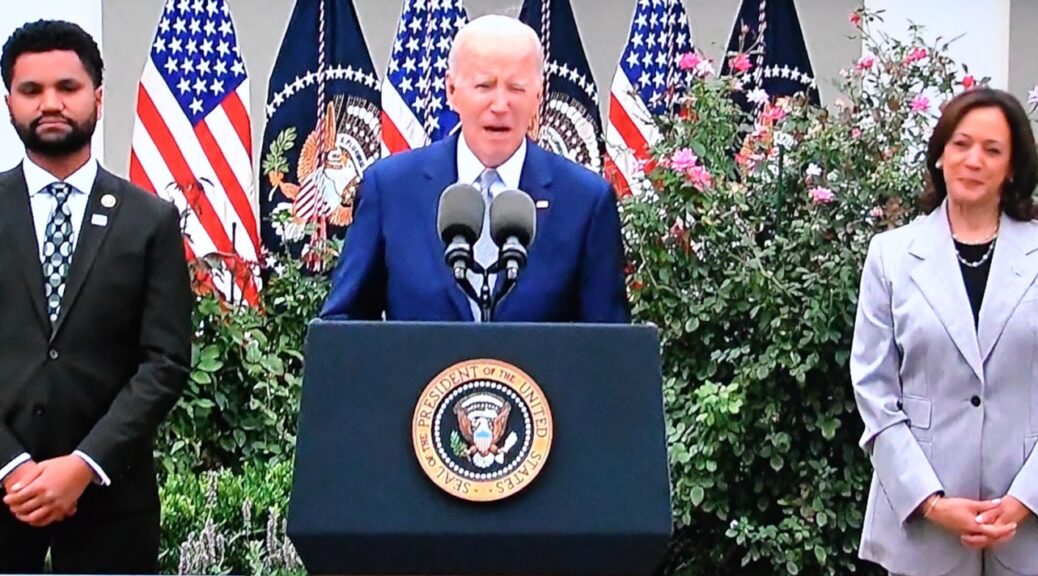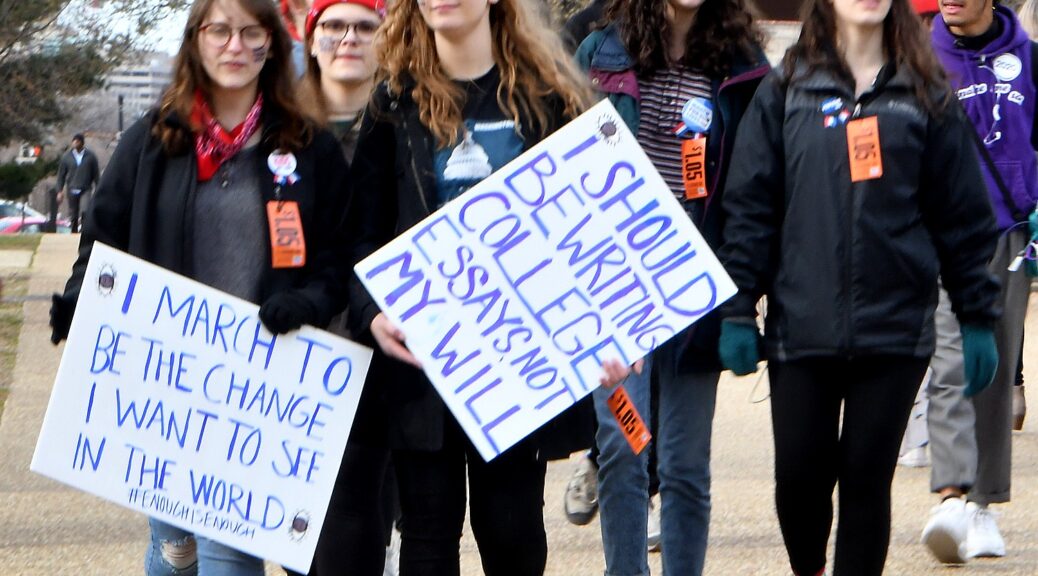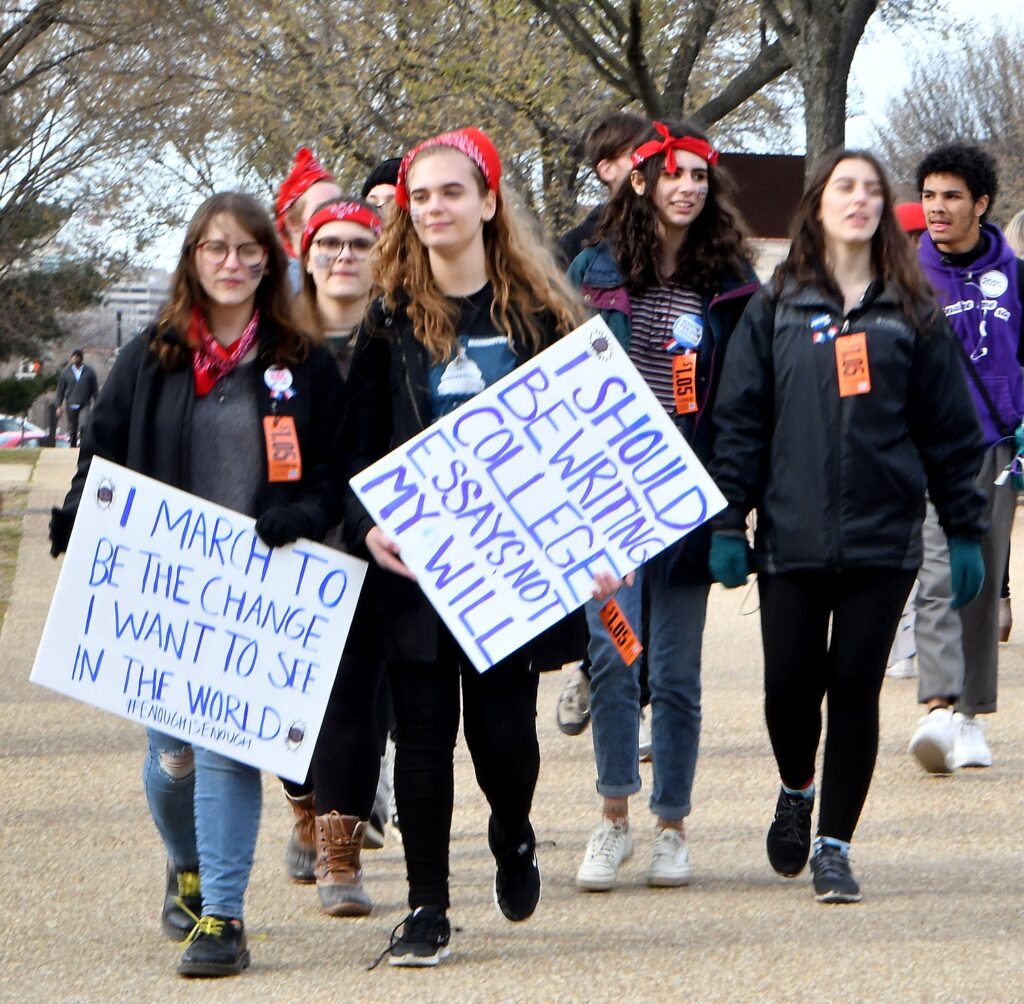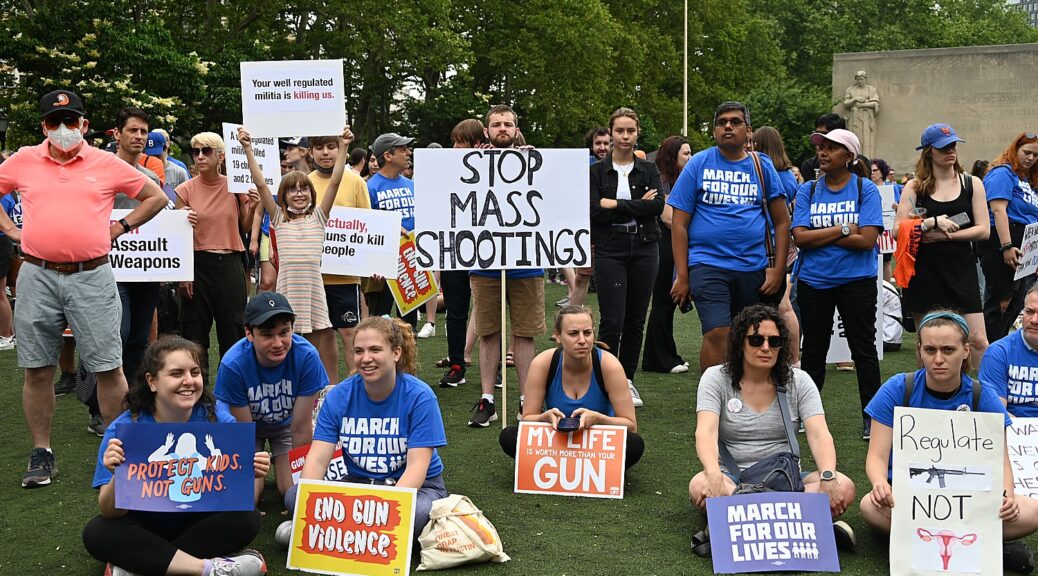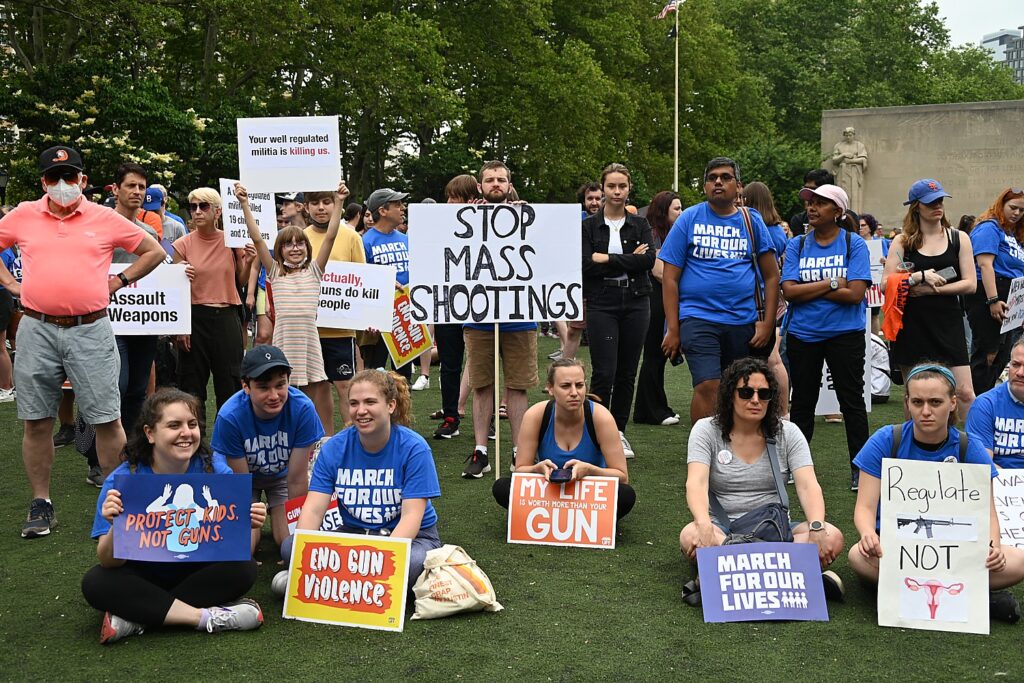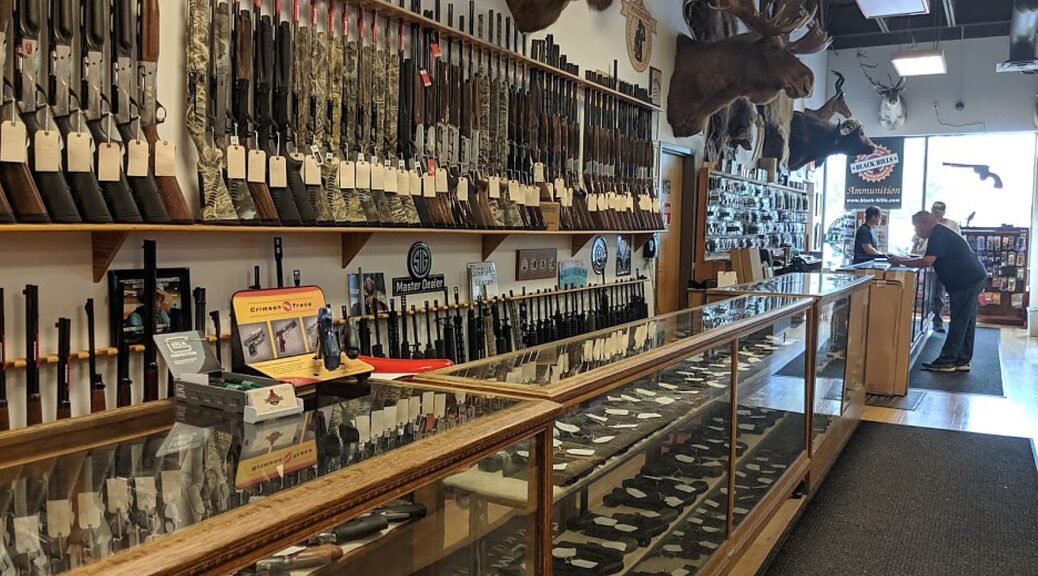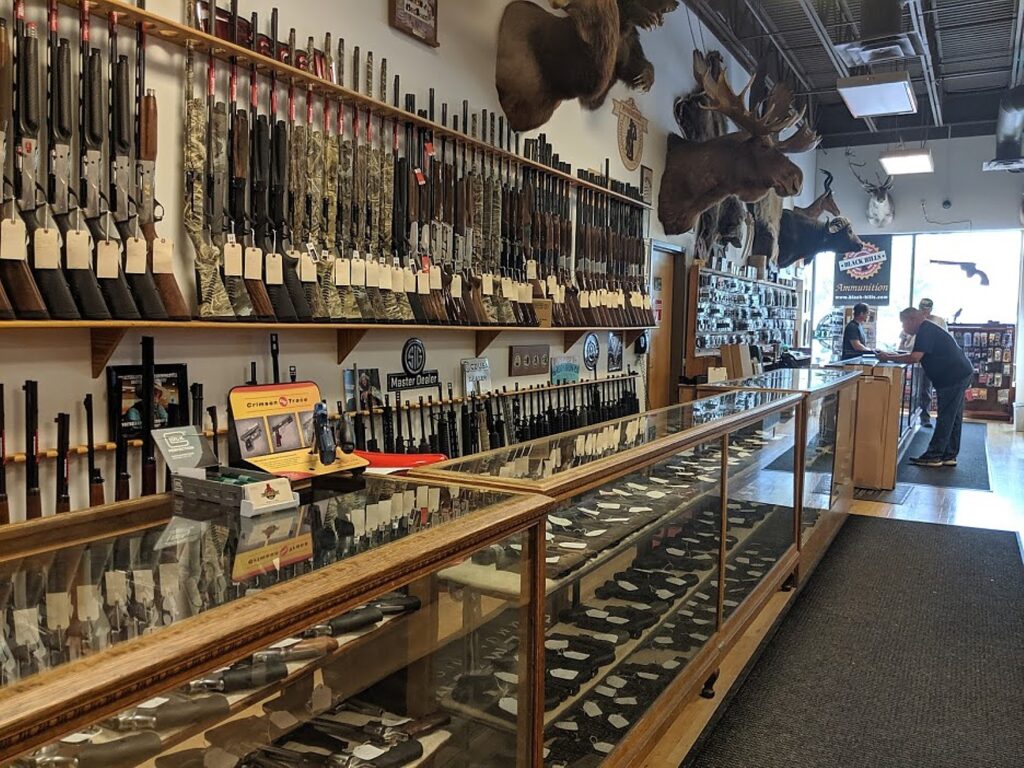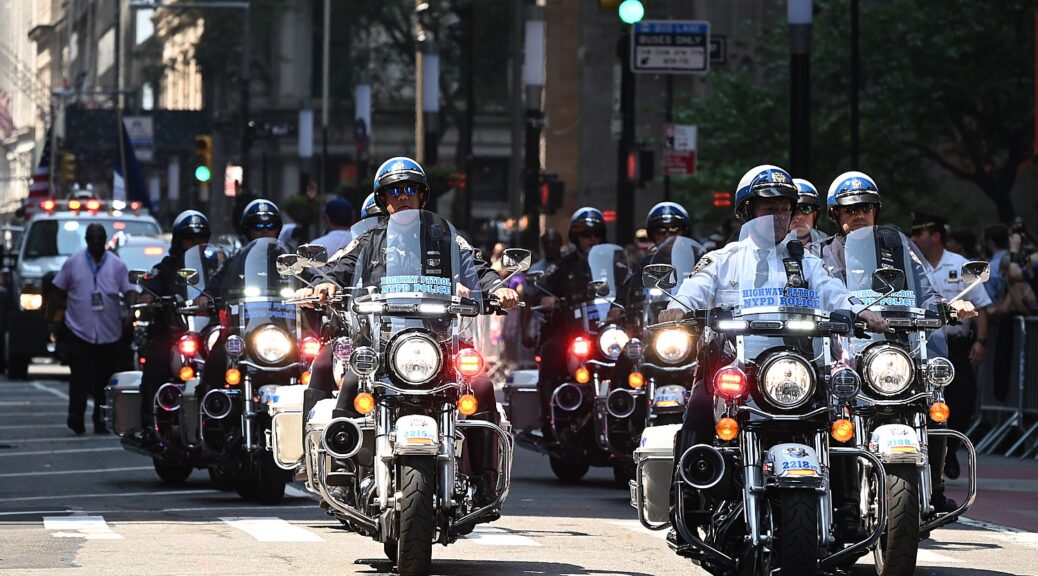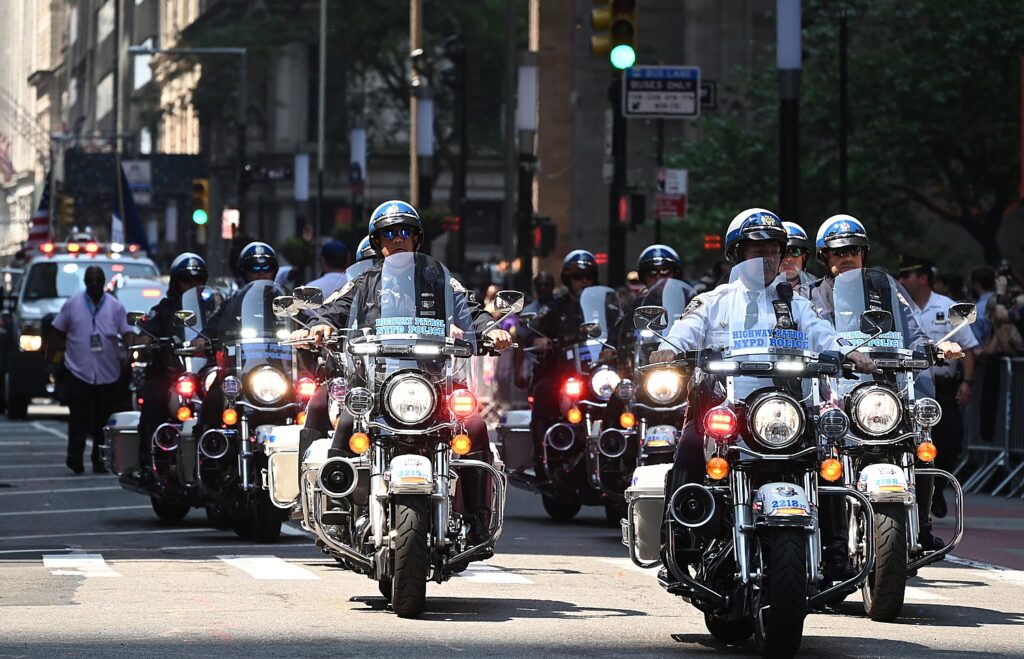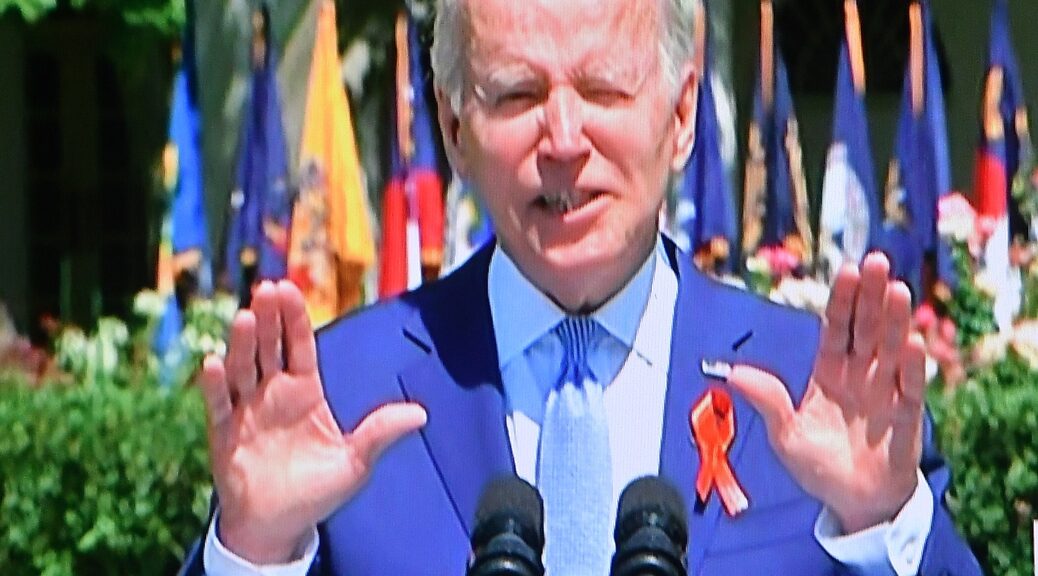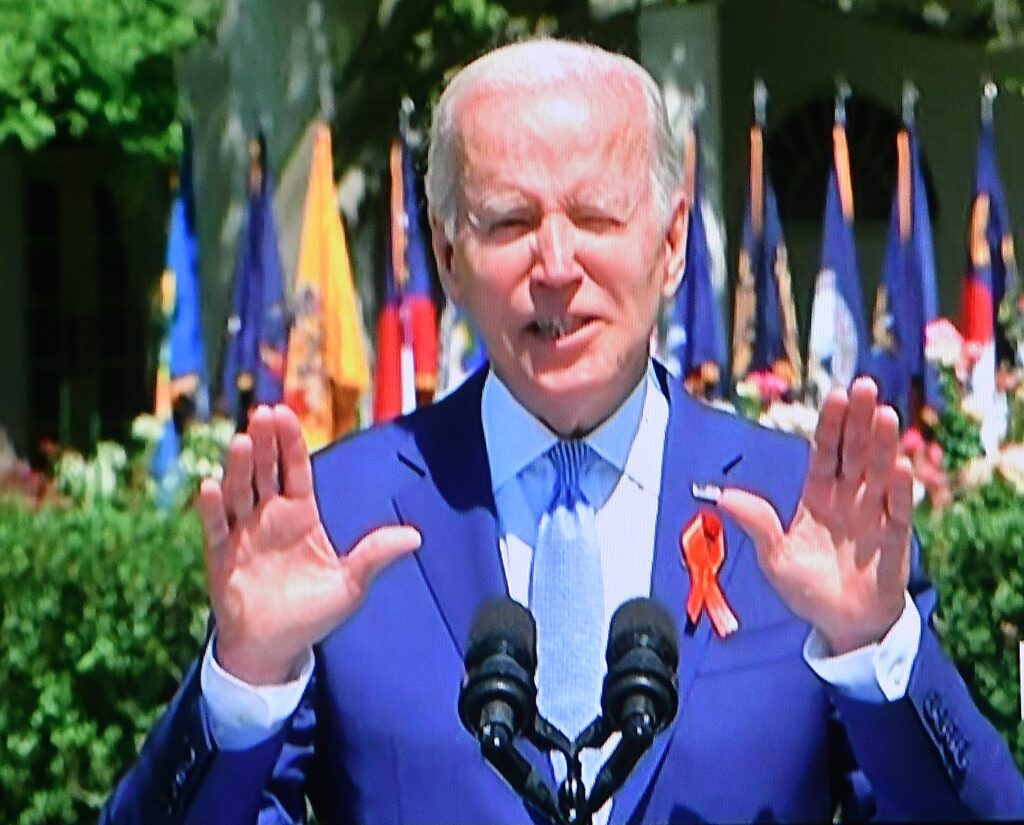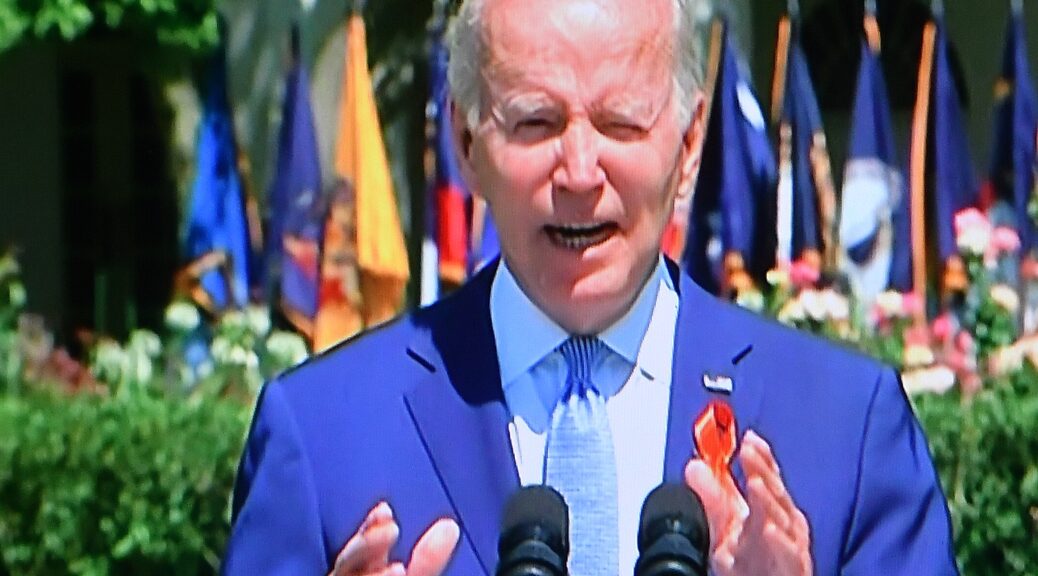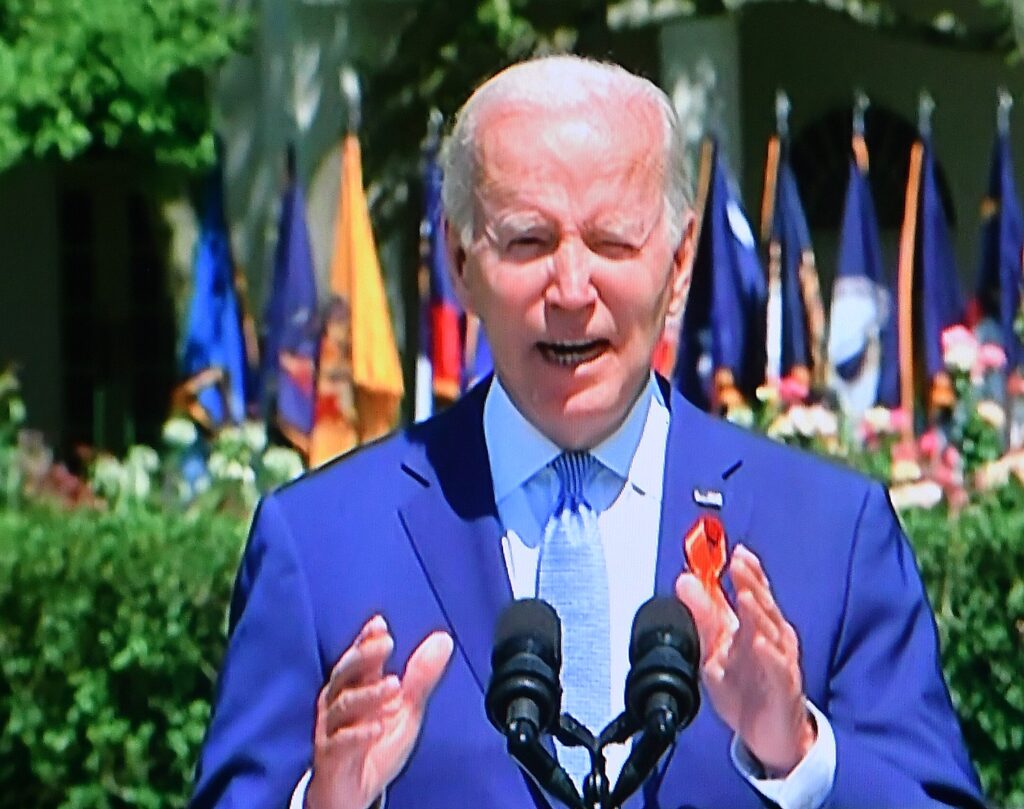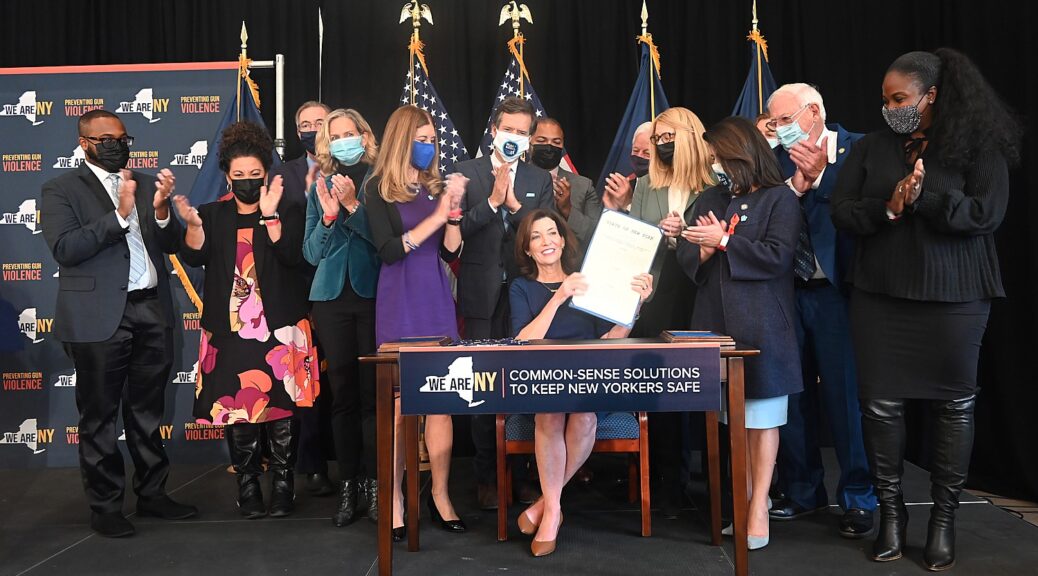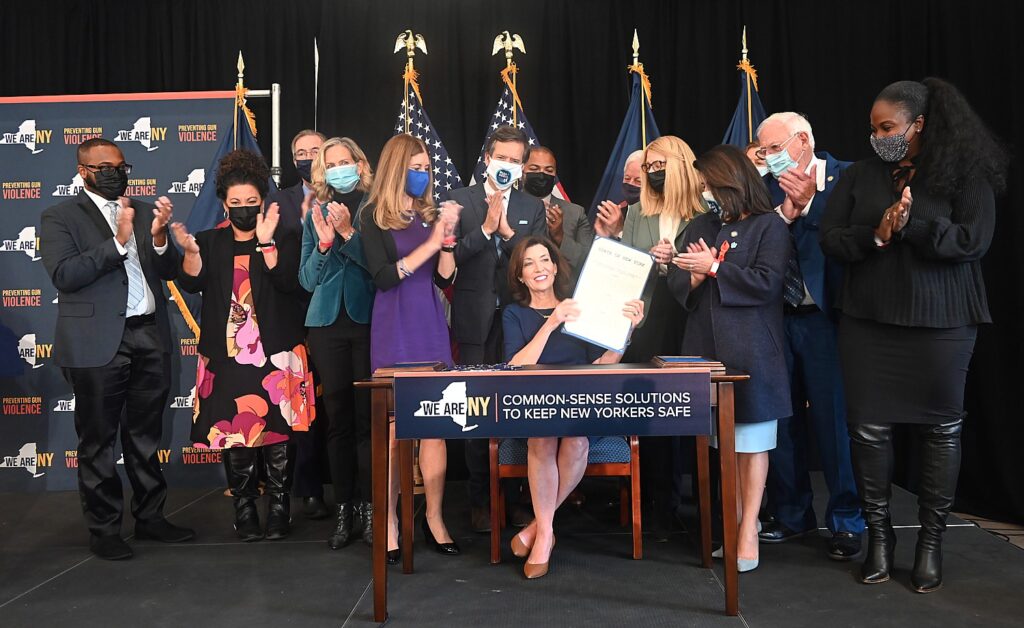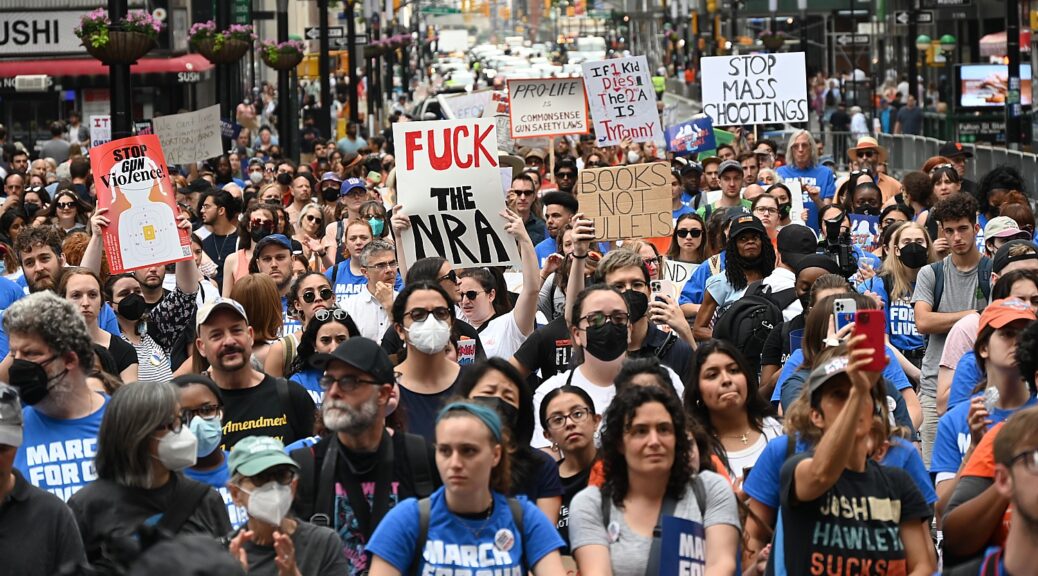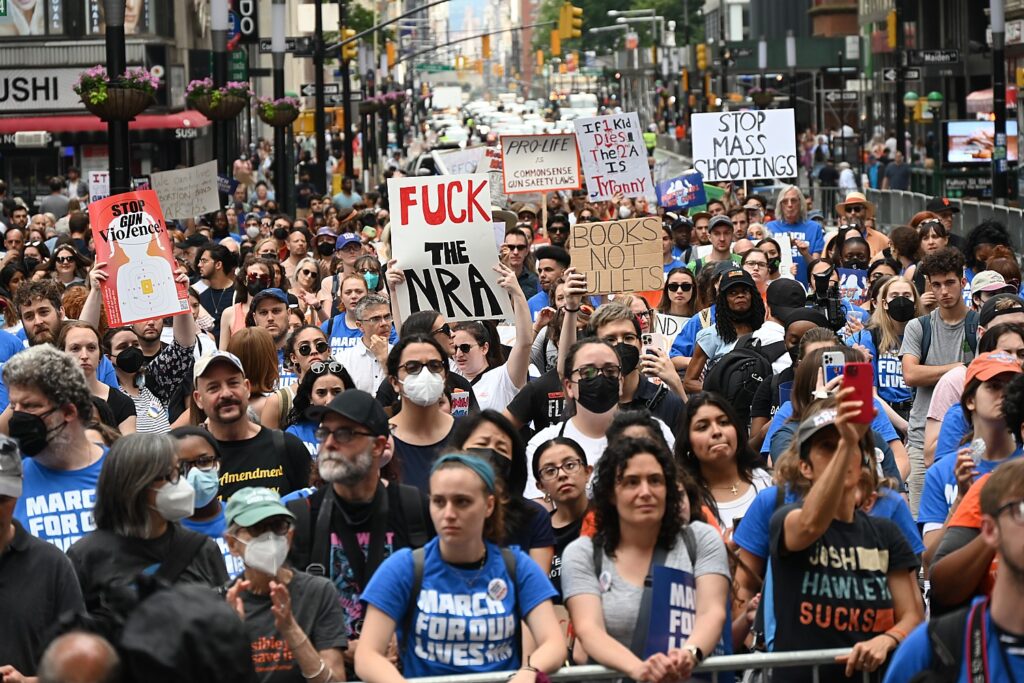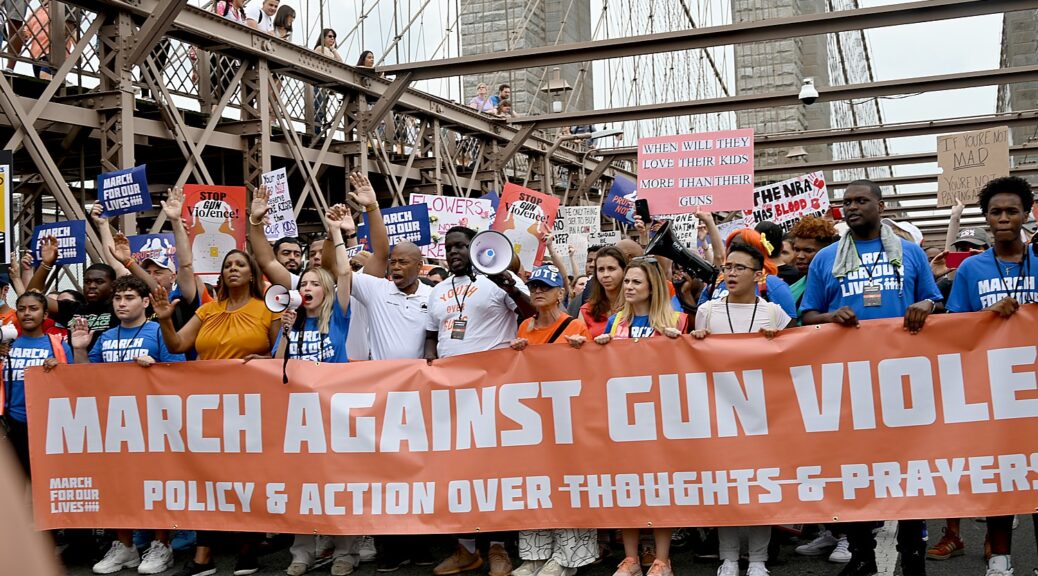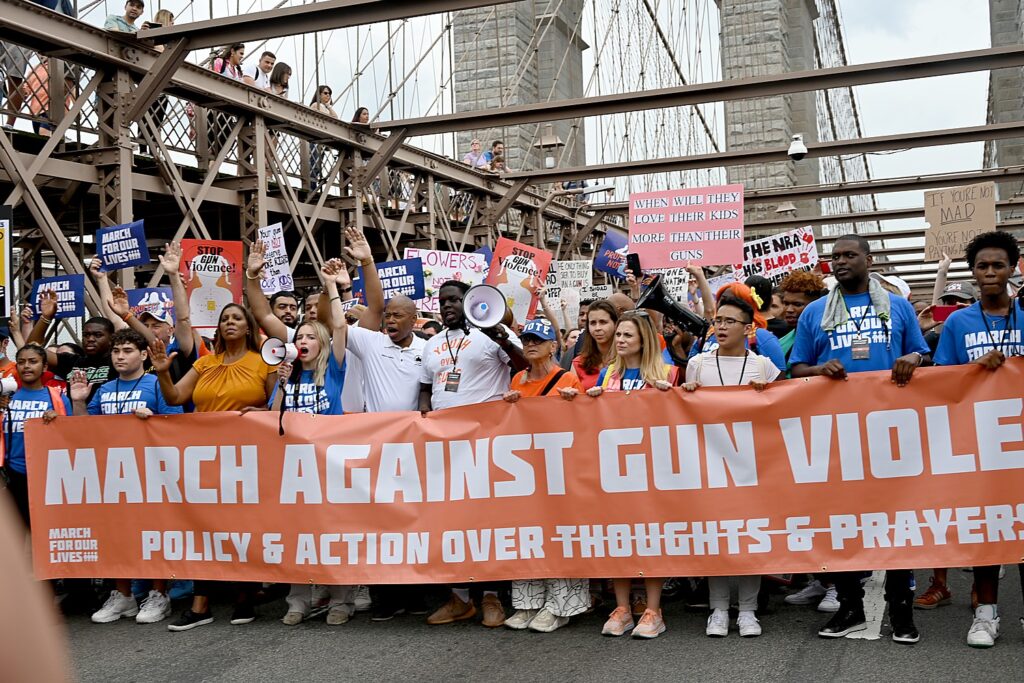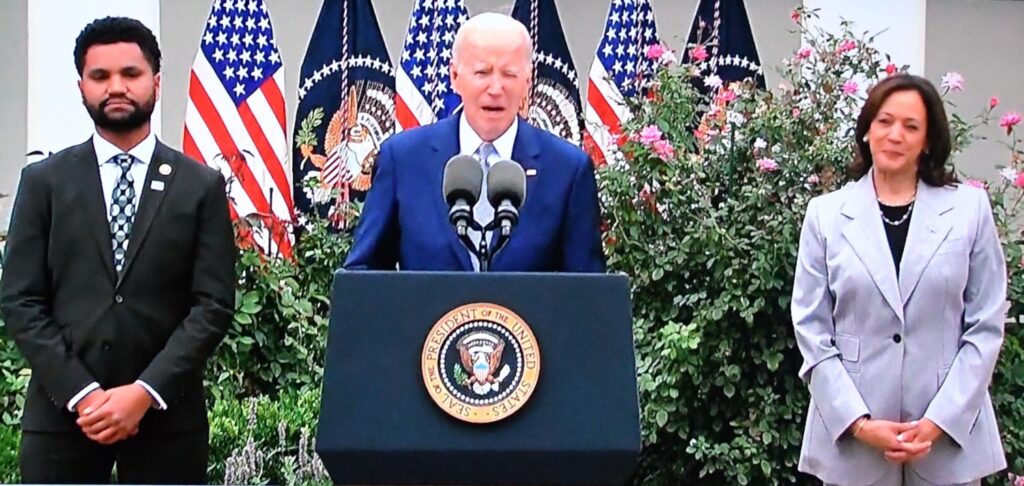
By Karen Rubin, news-photos-features.com
For those who insist the 2nd Amendment is absolute and government has no authority to regulate guns, look to the preamble of the Constitution, the authority is written there: “to form a more perfect Union, establish Justice, insure domestic Tranquility, provide for the common defence, promote the general Welfare, and secure the Blessings of Liberty to ourselves and our Posterity.”
It’s a shonda that in face of 31,394 gun deaths and 506 mass shootings so far this year- that President Biden has felt the need to establish the first-ever Office of Gun Violence Prevention. Headed by Vice President Kamala Harris, it is aimed at providing aid and comfort to communities after yet another incident of gun violence, in the same way FEMA does after a disaster, recognizing the trauma and dislocation of communities after such events. The office will also see to fully implement the provisions of the Safer Communities Act – the first serious gun control legislation in nearly 30 years – enact the many gun-safety Executive Orders, and see where new measures need to be taken.
President Biden also vowed to see renewed legislation banning assault weapons and high-capacity magazines, and gave a long list of actions that Congress must take to end the scourge, the epidemic of gun violence that is uniquely “American.”
The new Office of Gun Violence Prevention will be overseen by Vice President Harris, who has been a been a key leader in the Biden-Harris Administration’s effort to end our nation’s gun violence epidemic. Stefanie Feldman, a longtime policy advisor to President Biden on gun violence prevention, will serve as Director of the Office of Gun Violence Prevention, alongside leading gun violence prevention advocates Greg Jackson and Rob Wilcox, who will join the Administration as Deputy Directors of the Office of Gun Violence Prevention.
“Every time I’ve met with families impacted by gun violence as they mourn their loved ones, and I’ve met with so many throughout the country, they all have the same message for their elected officials: ‘do something.’ It’s why, last year, I signed the Bipartisan Safer Communities Act to keep guns out of dangerous hands, and have taken more executive action than any President in history to keep communities safe. But as I’ve said before – while these are important steps, they are just the first steps toward what is needed,” President Biden said at a ceremony announcing the office.
“That’s why I’m announcing additional steps forward, with the first-ever White House Office of Gun Violence Prevention, overseen by Vice President Harris, to build upon these measures and keep Americans safe. The Office will include Stefanie Feldman, who has capably led my Administration’s gun violence prevention efforts and been a trusted aide for more than a decade, alongside leading experts Greg Jackson and Rob Wilcox whose own lives and families have been touched by the tragedy of gun violence. They have turned their pain into purpose and dedicated their careers to being advocates for change – that important work will continue as they join my team in these new roles.
“I’ll continue to urge Congress to take commonsense actions that the majority of Americans support like enacting universal background checks and banning assault weapons and high-capacity magazines. But in the absence of that sorely-needed action, the Office of Gun Violence Prevention along with the rest of my Administration will continue to do everything it can to combat the epidemic of gun violence that is tearing our families, our communities, and our country apart,” Biden said.
The Office of Gun Violence Prevention builds on historic actions taken by President Biden to end gun violence in our country: including signing the Bipartisan Safer Communities Act, the most significant legislative action in nearly 30 years aimed at doing so, and taking more meaningful executive action than any other president to make our schools, churches, grocery stores, and communities safer.
The Biden-Harris Administration has worked to implement the Bipartisan Safer Communities Act, the most significant gun violence prevention legislation in nearly 30 years. This legislation is already saving lives by keeping guns out of the hands of individuals under 21 who are prohibited from purchasing firearms, empowering the Justice Department with new authorities to prosecute firearms traffickers, improving access to mental health services in our schools to help young people deal with the trauma and grief resulting from gun violence, and investing in community violence interventions.
The Biden-Harris Administration has announced dozens of executive actions to: keep especially dangerous weapons and repeat shooters off our streets; hold rogue gun dealers and gun traffickers accountable; provide law enforcement with the tools and resources they need to reduce gun violence; and address the root causes of gun violence. Most recently, the Justice Department’s Bureau of Alcohol, Tobacco, Firearms, and Explosives – a critical leader in work to reduce gun violence – proposed a rule to reduce the number of guns sold without background checks and keep guns out of the hands of criminals.
President Biden continues to call on Congress to take additional action, including by:
- Banning assault weapons and high-capacity magazines;
- Requiring safe storage of firearms;
- Requiring background checks for all gun sales;
- Eliminating gun manufacturers’ immunity from liability; and
Enacting his Safer America Plan, which would put more police officers on our streets for accountable, community policing and invest in gun violence prevention and intervention.
“Every person and every child deserves the opportunity to fulfill their dreams and live up to their God-given potential. Every family, in every community, should have the freedom to live and to thrive,” Vice President Kamala Harris stated. “We know true freedom is not possible if people are not safe. This epidemic of gun violence requires urgent leadership to end the fear and trauma that Americans experience every day. The new Office of Gun Violence Prevention will play a critical role in implementing President Biden’s and my efforts to reduce violence to the fullest extent under the law, while also engaging and encouraging Congressional leaders, state and local leaders, and advocates to come together to build upon the meaningful progress that we have made to save lives. Our promise to the American people is this: we will not stop working to end the epidemic of gun violence in every community, because we do not have a moment, nor a life to spare.”
See also:
To Stop Scourge of Gun Violence, End Easy Access, Hold Manufacturers, Retailers, Owners Accountable
The 2nd Amendment Myth that ‘Gun Rights’ Cannot be ‘Infringed’
__________________________
© 2023 News & Photo Features Syndicate, a division of Workstyles, Inc. All rights reserved. For editorial feature and photo information, go to www.news-photos-features.com, email editor@news-photos-features.com. Blogging at www.dailykos.com/blogs/NewsPhotosFeatures. ‘Like’ us on facebook.com/KarenBRubin, Tweet @KarenBRubin

